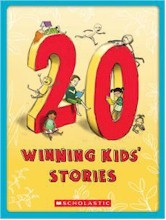Here is the post from his blog about a new site which gave him the inspiration for his talk's title - “Books leave an indelible mark on who we are and who we will become”.

This new site, including a separate community for kids, asks users "Which 5 books shaped your life?"
New York, NY (October 28, 2010)
To celebrate the importance of books and reading, Scholastic is launching You Are What You Read, a social networking site for readers around the world.
Users log on to http://www.youarewhatyouread.com/, list the five books that had the biggest impact on their lives, and connect with readers all over the world through these shared “Bookprints.”
The site also contains the Bookprints of more than 125 “Names You Know” – notable people from entertainment, academia, business, media, publishing, and more – including Scarlett Johansson, Al Roker, Sir James Dyson, Venus Williams, Jodi Picoult, Malcolm Gladwell, Judy Blume, President George H.W. Bush and President William Jefferson Clinton.
After logging into You Are What You Read via Facebook or Scholastic.com users can:
- Discover new books through an interactive web that shows how users’ Bookprints are connected
- Find and connect with users across generations and from around the world to see the books in their Bookprints
- Compare their Bookprints to those of the participating “Names You Know,” and find out if they share a book in their Bookprint with famous athletes, award-winning entertainers, world-renowned scientists, or iconic business leaders
- “Favorite” other books they like and check out what similar users enjoy reading
- See which books have been chosen as Favorites from around the world
- Share a book in the real word through Pass It On, which encourages users to give a favorite book to a family member, a friend, or even a complete stranger.
- Coming Soon: Users can join ongoing conversations about books and Bookprints in “Book Buzz,” a live feed of comments, news, and reviews.
“Books leave an indelible mark on who we are and who we will become,” said Maggie McGuire, Vice President, eScholastic, Kids and Parents Channels. “You Are What You Read is a celebration of the books that bind us together, and the personal connection we feel when we read a great book. In addition, the new site adds a tool in our arsenal to help kids and parents find the books that will keep kids reading every day. We know that parents struggle with this challenge and yet they are the number one source kids’ rely on for recommendations. We plan to help them.”
The site is part of Scholastic’s Read Every Day. Lead a Better Life. global literacy campaign, in celebration of Scholastic’s 90th anniversary. For more information on the Read Every Day campaign, visit scholastic.com/readeveryday.]
Thanks Graham !
Beattie's Book Blog is at http://beattiesbookblog.blogspot.com/






